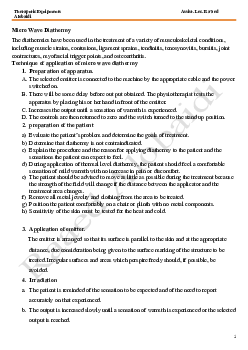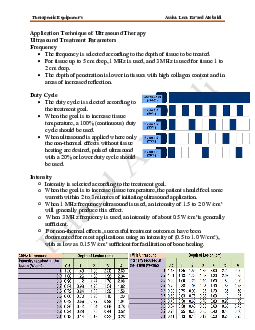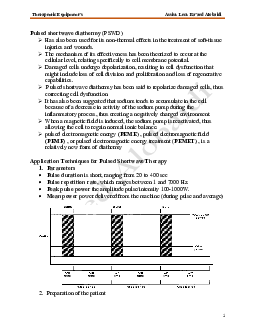
Preview text:
lOMoARcPSD|36041561
Therapeutic Equipment’s Assist. Lect. Ra’aed Alobaidi
Application Technique for Contrast Bath Therapy Equipment Required
• Two water containers • Thermometer • Towels Procedure
1. Fill two adjacent containers with water. The containers may be whirlpools, buckets, or tubs.
Fill one container with warm or hot water, at 38° C to 44° C (100° F to 111° F), and the other
with cold or cool water, at 10° C to 18° C (50° F to 64° F).
When contrast baths are used for the control of pain or
edema, it is recommended that the temperature
difference between the warm and cold water be large;
when contrast baths are used for desensitization, it is
recommended that the temperature difference between
the two baths be small initially and then gradually
increased for later treatments as the patient’s sensitivity decreases.
2. First, immerse the area to be treated in warm water for 3 to 4 minutes; then immerse the area in cold water for 1 minute.
3. Repeat this sequence 5 or 6 times to provide a total treatment time of 25 to 30 minutes, and
end with immersion in warm water.
4. When the treatment is completed, dry the area quickly and thoroughly. Advantages
• May promote a more vigorous circulatory effect than heat or cold alone • Raaed Alobaidi
Provides good contact with contoured distal extremities compared with other thermal agents
• May help to provide pain control without aggravating edema
• Allows movement in water for increased circulatory effects Disadvantages
• Limb is in a dependent position, which may aggravate edema.
• Some patients do not tolerate cold immersion.
• Evidence from research evaluating the effects of contrast baths is lacking. 1
Downloaded by Nga T??ng (ngahuong55@gmail.com)



